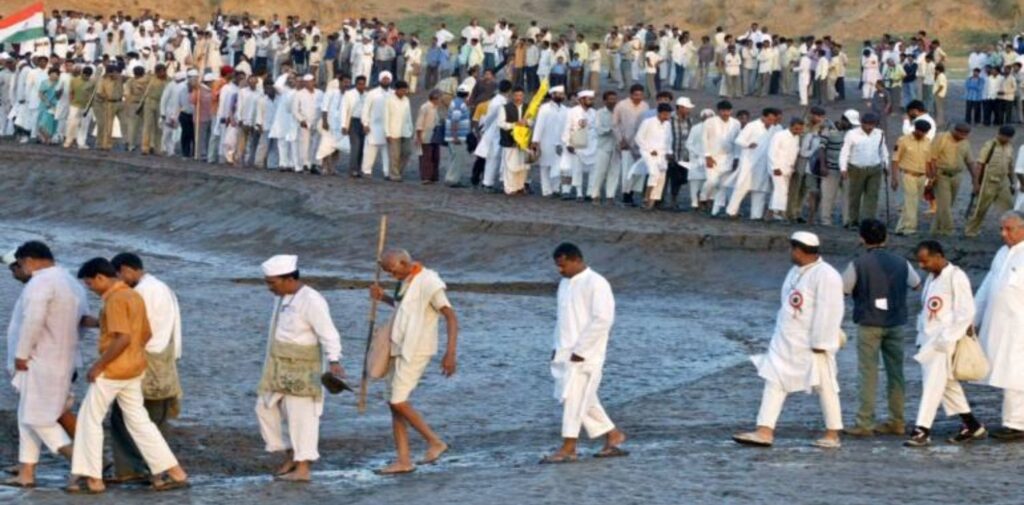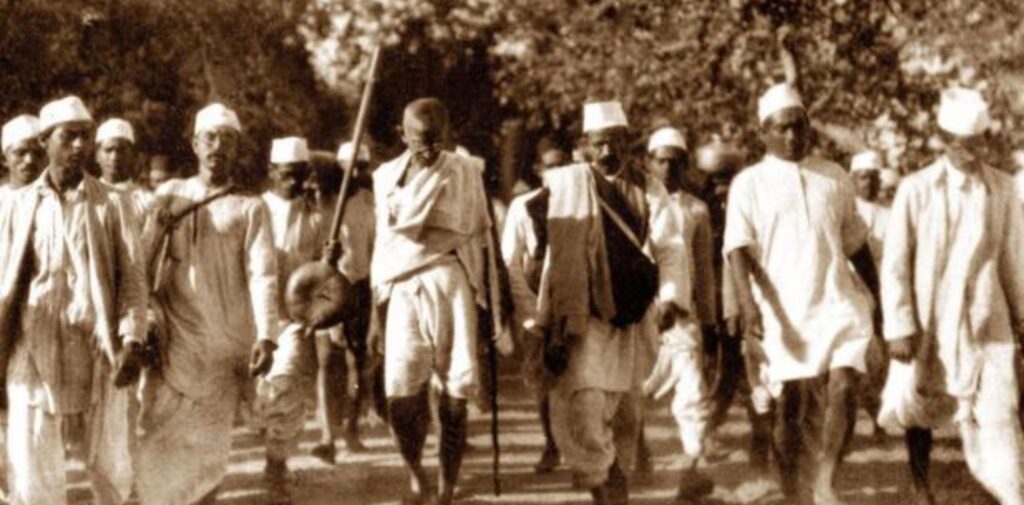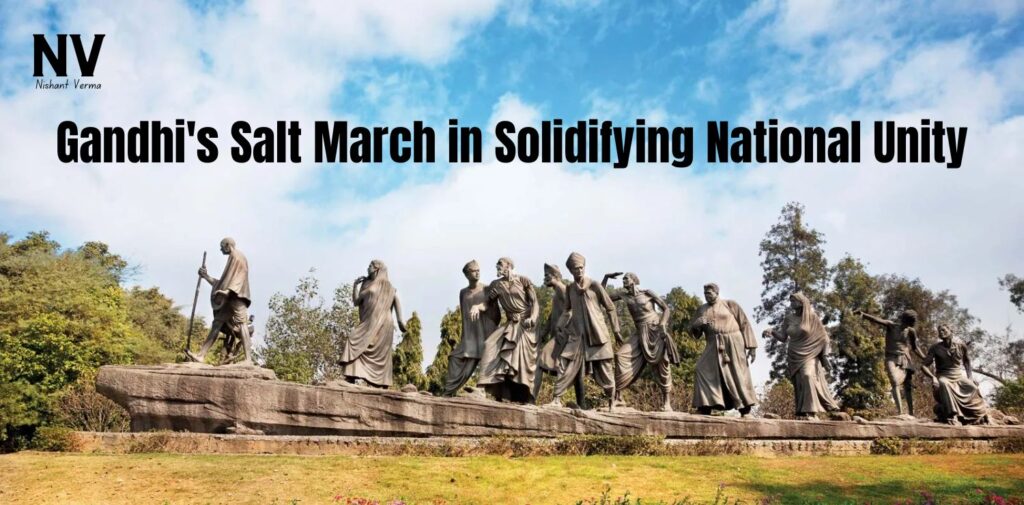One of the most iconic and powerful moments in India’s struggle for independence from British rule was the Salt March, also known as the Dandi March. Led by Mahatma Gandhi in 1930, this event not only marked a significant turning point in the Indian freedom movement but also played a crucial role in uniting the Indian people from all regions, religions, and social backgrounds. The Salt March became a symbol of resistance, resilience, and the collective spirit of the nation in its fight for freedom.
This article explores how Gandhi Salt March was instrumental in solidifying national unity during the struggle for independence. It looks at the key events surrounding the march, the reasons for its success, and the lasting impact it had on the unity of the Indian people.
The Background to the Salt March
Before the Salt March, India was under British colonial rule, and the British government imposed several taxes on everyday products, including salt. Salt was an essential part of the diet for every Indian, regardless of social class, and the British monopoly on salt production and its high taxes affected the poor the most. This unjust tax was seen as a clear symbol of British oppression and a reflection of their control over the basic needs of the Indian population.
In 1930, Gandhi, the leader of the Indian National Congress (INC), decided to challenge the British-imposed salt laws. Gandhi believed that this was an issue that could unite the people of India across regional, religious, and economic lines. Salt, after all, was something that everyone needed, and its production was a natural resource that belonged to the people of India, not the British.
Gandhi’s call to defy the salt laws was not only about the protest against an unfair tax but also a larger symbol of the need for Indian self-reliance. By choosing this simple yet powerful issue, Gandhi was able to rally millions of Indians to the cause of independence.

The Salt March: The Beginning of a Movement
On March 12, 1930, Gandhi set out on a 240-mile journey from his ashram in Sabarmati (in Gujarat) to the coastal village of Dandi. Gandhi was accompanied by a small group of followers, and the journey, which would take around 24 days, soon became a symbolic and public demonstration against British rule.
As Gandhi walked, his message spread quickly across the country. People from all walks of life, including peasants, women, students, and workers, joined the march along the way. The simplicity of Gandhi’s action—walking to the sea to make salt—struck a chord with people who felt the burden of British control. It was not just a march for salt but for dignity, self-respect, and independence.
The Salt March was more than just a protest; it was a peaceful act of civil disobedience, where people were encouraged to break the law in a non-violent manner. Gandhi’s philosophy of Satyagraha (truth force or nonviolent resistance) was the backbone of the march. He believed that by defying the salt laws without using violence, Indians could show the British their determination for freedom and gain worldwide attention for their cause.

Uniting People Across India
One of the most remarkable aspects of the Salt March was its ability to unite people from all parts of India. India, at that time, was not a unified nation in the modern sense. The country was divided by regional differences, social hierarchies, religious divisions, and colonial policies that had kept people apart for centuries. The British had successfully used “divide and rule” tactics, which deepened the social and political rifts in the country.
However, Gandhi’s Salt March was able to transcend these divisions. The issue of salt was universal—everyone needed it. People from rural areas, where access to resources was often limited, felt the harshness of the salt tax more than anyone. As the march progressed, Gandhi’s call to action was embraced by people from different communities—Hindus, Muslims, Sikhs, and others—and from different regions, including cities and villages across India.
Gandhi’s leadership also emphasized the importance of non-violence and self-discipline. His message encouraged individuals to stand up against injustice peacefully, creating a sense of solidarity that appealed to people across the nation. As the march continued, people everywhere began to see it as not just a struggle for salt but a fight for freedom and national dignity.
In the cities and towns that the march passed through, people greeted Gandhi and his followers with enthusiasm, and many joined the march in their own local areas. The Salt March became more than just a protest against a tax; it became a national movement. As Gandhi and his followers reached the coast at Dandi on April 6, 1930, he made salt from the seawater, directly violating British laws. This symbolic act was a defiant statement of India’s right to self-governance.
The British Response and National Repercussions
In response to the Salt March, the British government cracked down harshly. Thousands of people who defied the salt laws by making their own salt or selling it were arrested. Gandhi himself was arrested, but the movement had already gained momentum. The British were unable to stop the spread of protests across India.
The Salt March galvanized the Indian population in a way that no other movement had done before. It was no longer just an elite or intellectual movement but a mass movement involving people from all backgrounds. The British had hoped to suppress the protests through arrests and violence, but this only strengthened the resolve of the Indian people.
The Salt March also attracted international attention. The world began to see the non-violent struggle of India against British rule as a powerful symbol of resistance. This increased pressure on the British government, both within India and internationally. The Salt March played a key role in bringing India’s fight for independence to the global stage.

The Long-Term Impact on National Unity
The Salt March had a profound and lasting impact on the unity of the Indian people. It made Indians realize that their collective strength could challenge the might of the British Empire. The protest wasn’t just about salt; it was about a unified demand for self-rule and dignity. Gandhi’s leadership and his commitment to non-violence inspired millions, and the Salt March became a milestone in India’s journey to independence.
The march also laid the foundation for future protests and movements. After the Salt March, other acts of civil disobedience followed, such as the Quit India Movement in 1942. The Salt March demonstrated the power of peaceful resistance, and it continued to influence Indian politics and social movements long after independence.
Moreover, the Salt March marked the beginning of a nationwide recognition of India’s need for self-rule. The participation of all sections of society showed that the country was united in its goal for independence. The march also gave a voice to the marginalized and oppressed, including women and lower-caste individuals, who had previously felt excluded from mainstream politics.
Conclusion: Gandhi Salt March
Mahatma Gandhi’s Salt March was more than just a protest against British salt laws—it was a turning point in the Indian independence movement. By focusing on a simple yet powerful issue that affected all Indians, Gandhi managed to unite the people of India in a way that had never been done before. The march gave people a sense of collective purpose and showed that their actions, no matter how small, could challenge the British Empire.
The Salt March was instrumental in solidifying national unity in India. It transcended regional, religious, and social divisions, bringing people from all parts of the country together. Gandhi’s leadership, the spirit of non-violence, and the shared goal of freedom played a crucial role in making the march a success. It marked the beginning of a new phase in the Indian freedom struggle, one that would ultimately lead to India’s independence in 1947.
Today, the Salt March remains a symbol of peaceful resistance and national unity. It continues to inspire movements for justice, equality, and freedom all over the world. Gandhi’s Salt March proved that when a nation stands together, no force—no matter how powerful—can stand in its way.




